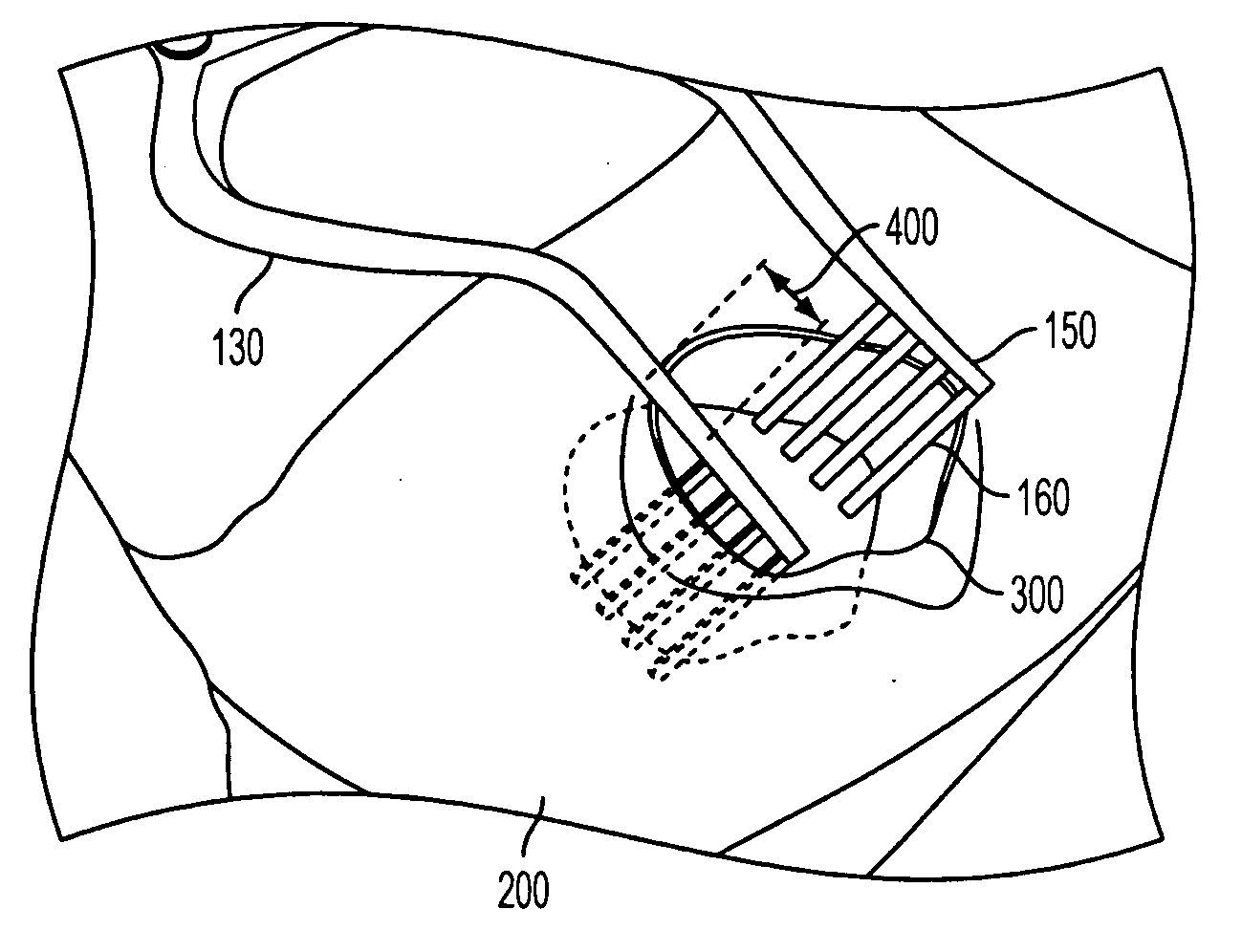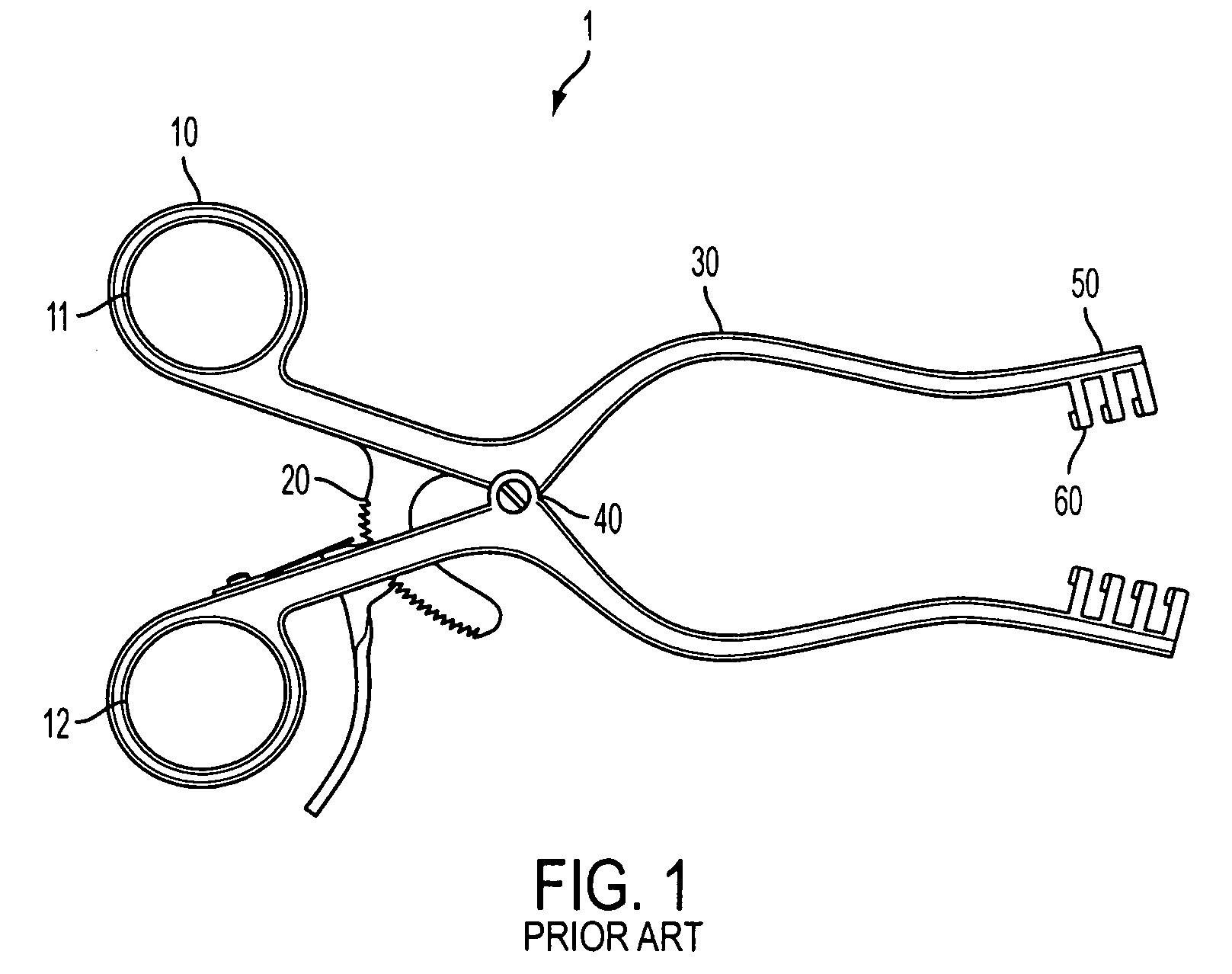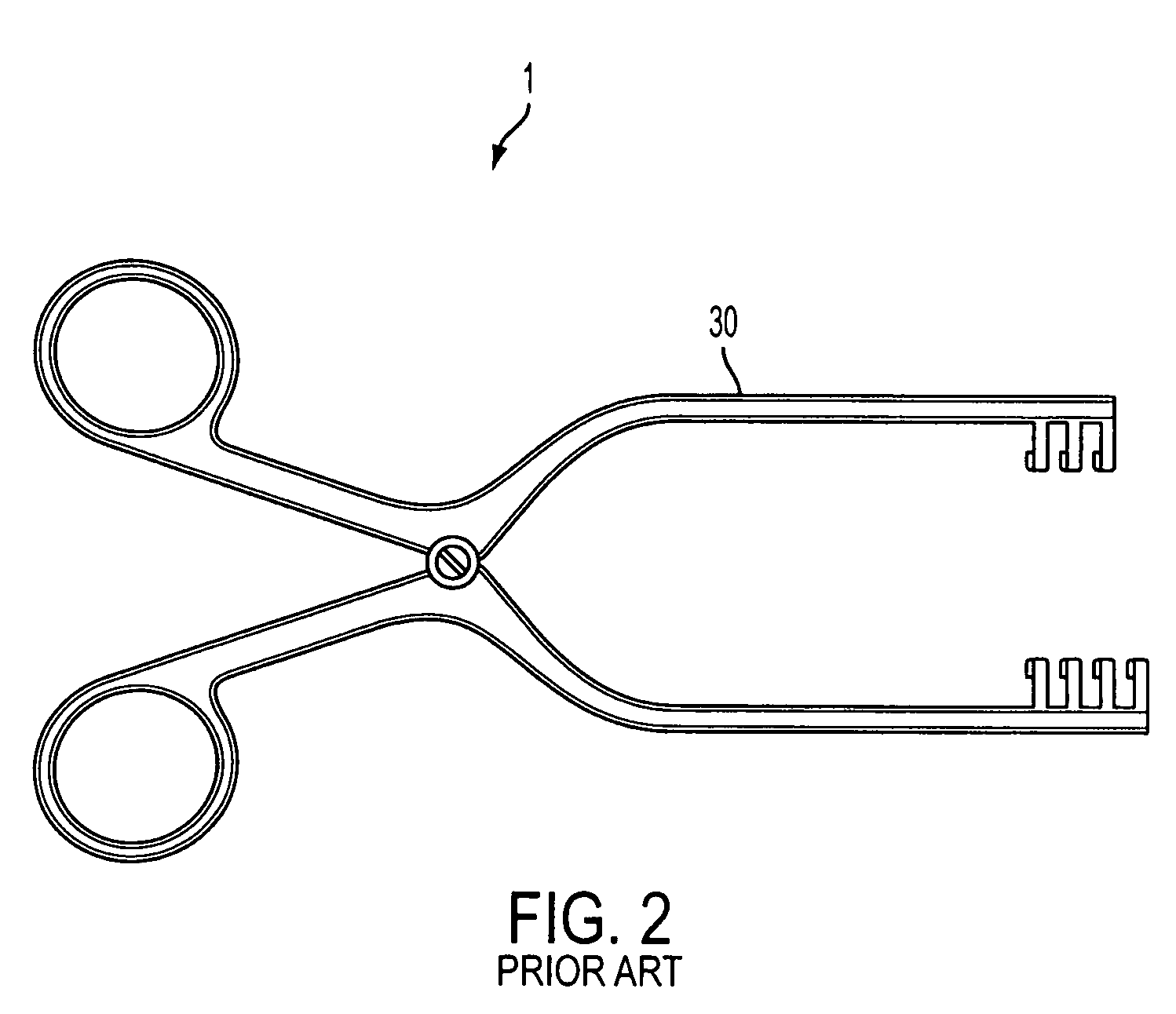Novel retractor for hernia surgery
a retractor and hernia technology, applied in the field of hernia surgery, can solve the problems of increasing the challenge of surgeons performing inguinal hernia repairs, inability to visualize inguinal hernia defects through small skin incisions, and insufficient self-retaining hernia retractors, so as to reduce the number of tools brought into the operating room, increase the chance of devices, and minimize the effect of tools
- Summary
- Abstract
- Description
- Claims
- Application Information
AI Technical Summary
Benefits of technology
Problems solved by technology
Method used
Image
Examples
Embodiment Construction
[0046]FIG. 1 shows a hinged retractor 1 according to the prior art. The hinged retractor 1 has a handle portion 10, itself having loops 11 and 12 to accommodate the finger and thumb of a user, respectively. The retractor 1 also has a ratchet portion 20 to maintain the position of the arms 30 when the retractor 1 is opened around a hinge 40. The arms 30 have blades 50 formed at the ends, and the blades 50 have prongs 60 extending therefrom in a downward direction.
[0047]FIG. 2 depicts a hinged retractor 1 having arms 30 which are mostly straight as they approach the blades 50 according to the prior art.
[0048]FIG. 3A shows a side view of the blades according to the prior art. The prongs 60 of the blades 50 are formed with barbs 62 (shown more clearly in FIG. 3B) that face outward from the retractor 1. The blades 50 are formed such that one blade 50 has three prongs 60 while the other blade 50 has four prongs 60. This formation allows the prongs 60 to be staggered such that they may ove...
PUM
 Login to View More
Login to View More Abstract
Description
Claims
Application Information
 Login to View More
Login to View More - R&D
- Intellectual Property
- Life Sciences
- Materials
- Tech Scout
- Unparalleled Data Quality
- Higher Quality Content
- 60% Fewer Hallucinations
Browse by: Latest US Patents, China's latest patents, Technical Efficacy Thesaurus, Application Domain, Technology Topic, Popular Technical Reports.
© 2025 PatSnap. All rights reserved.Legal|Privacy policy|Modern Slavery Act Transparency Statement|Sitemap|About US| Contact US: help@patsnap.com



